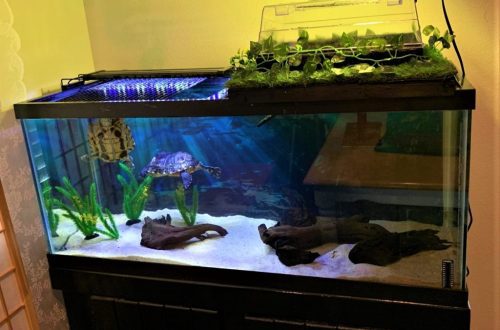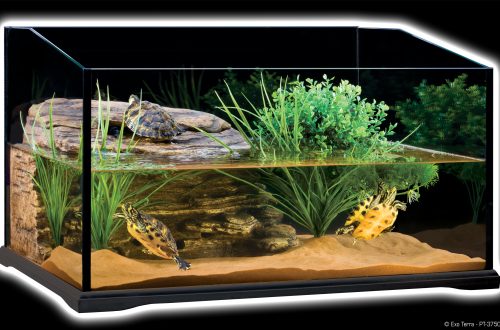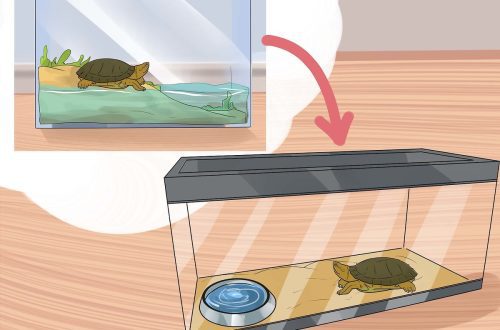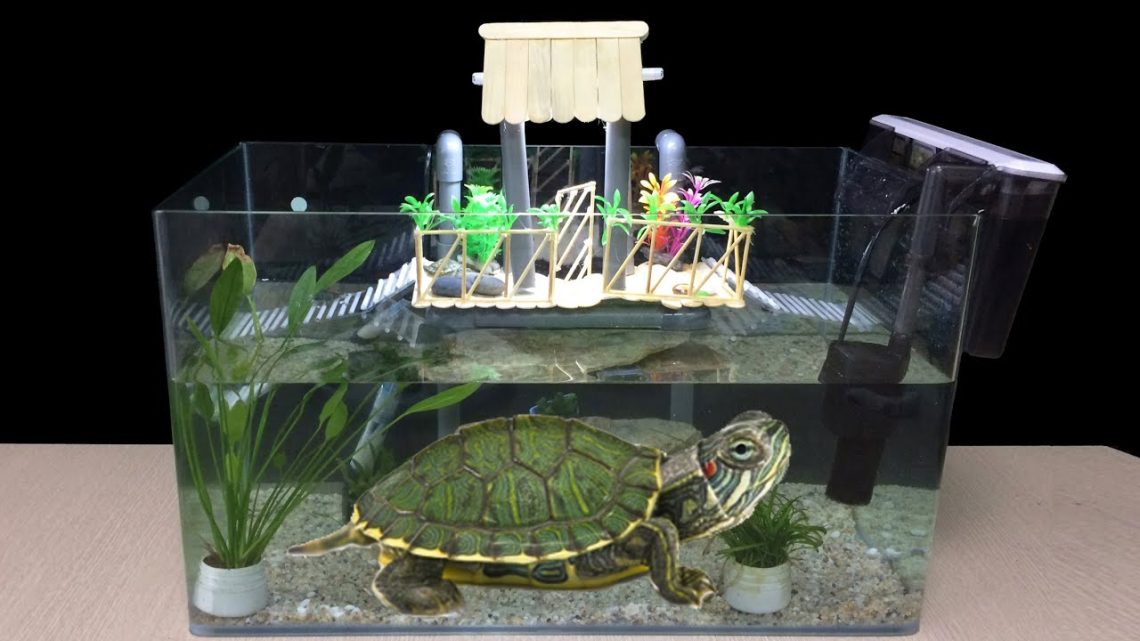
Xemilandina terrariuman - hemî li ser kurmikan û ji bo kulman
The decoration makes it possible to turn the terrarium into a pleasant addition to the interior. The use of various decorative elements and materials allows you to give a more attractive look to the terrarium as a whole. To finish both the front panel and the internal surfaces of the terrarium, you can use a variety of decorative materials: various plastics, bamboo, reed mats, rattan nets, mats, wickerwork, thin tuff slabs, planed boards treated with stain and varnished, slab, etc. P. Remarkable plastic qualities are fraught with foam, the processing of which with cutting tools, an electric soldering iron or open fire using a blowtorch, followed by coating with epoxy resin, makes it possible to create the most bizarre reliefs in the terrarium.
In addition, decoration allows you to hide conspicuous elements of the technical equipment of the terrarium – heaters, irradiators, thermostats, etc. Materials must be easy to use, light enough, not have sharp edges and corners that are dangerous for animals and the person working with them. It is important that decorative elements are easily dismantled and resistant to hot water and disinfectant solutions. Particular attention should be paid to the thermal insulation of decorative materials and elements in places where electrical wiring passes through them or located in close proximity to heating elements.
Do not cover decorative elements with varnish or paints.
The terrarium should not be empty, there should be holes and obstacles: roots, stones, snags.
 Background for terrariums
Background for terrariums
Ji bo ku terrariuma xemilandî xuyangek qediyayî bigire, pêdivî ye ku dîwarê paş, an tewra dîwarên kêlekê jî bi paşxaneyek were hişk kirin. Di rewşa herî hêsan de, ev kaxezek reş an rengîn e ku bi tonên neutral (gewr, şîn, kesk an qehweyî) ye. Hûn dikarin paşxaneyên rengîn ên ku li ser wan nexşeyek çapkirî bikar bînin, tenê motîfa nexşeyê divê bi rastiyê re têkildar be (mijara terrarium û jîngeha heywanê).
The walls can be decorated with pieces of oak or pine bark. With their horizontal arrangement, they imitate rocks, with a vertical arrangement, tree trunks. The bark is attached with waterproof glue or self-tapping screws. Sometimes mats made of reed or bamboo are used. In large, stable terrariums, special tiles imitating masonry can be attached to the walls with silicone glue, but this decor is too heavy.
Gelek celeb fîlimên paşîn dikarin ji beşa aquarium an terrariumê ya firotgehên heywanan werin kirîn.
Terrarium landscaping
Landscaping in terrariums and aquariums is not mandatory, especially since turtles can eat plants or break, tear out.
Nebatên çêkirî allow you to successfully decorate terrariums for reptiles when it is impossible to use live plants in them. Artificial plants need to choose high-quality ones made of dense plastic so that turtles do not bite off pieces from the scenery. Nebatên zindî must first of all be non-poisonous to land or aquatic turtles. The choice of plants depends on the biotope and microclimate in the habitats of the animal and technical capabilities. A terrarium for keeping highland reptiles must be planted with plants resistant to temperature extremes, high levels of illumination and UV (gavortia, gasteria, aloe, sciuooa, etc.). In the terrarium for desert reptiles, xerophytic plants are planted that are resistant to dehydration and high temperatures (euphorbia, lithops, aloe, agaves, senseviers, etc.). And in the terrarium – a corner of the tropical rainforest – plants that require both high temperature and high humidity (bromeliads, cheflers, gusmania, philodendrons, arrowroot, ficuses, etc.). Plants that are resistant to mechanical stress are preferred.
Landscaping methods: – direct planting of the soil surface (suitable only for newborn turtles); – placement of plants in pots; – placing plants in specially made boxes or pockets; – fixing epiphyte plants on a pillow of moss, on branches or decorative elements.
Pots and special boxes with plants planted in them can be immersed in the ground, placed on branches, decorative elements, terrarium walls or hung. It is unacceptable to use poisonous plants for landscaping, as well as plants with thorns, hooks, sharp cutting and stabbing leaf surfaces that give poisonous fruits or flowers, or those in which animals can get entangled. All means of placing plants in the terrarium should, if necessary, be easily removed from it without significant disturbance to the landscape and disturbance to the animals.
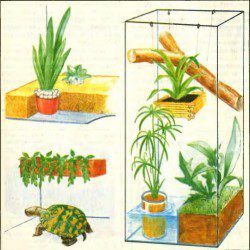
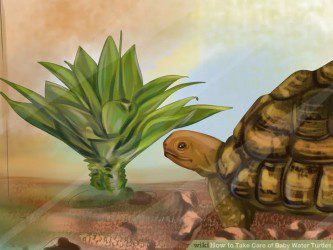
Second floor in the terrarium
For turtles are also often made in a terrarium 2 floors. In this case, a slide leads to the 2nd floor, under which (on the 1st floor) the turtles will have a house. However, it must be borne in mind that a turtle with rickets (weakened bones of the body and shell) can fall from the second floor and break its paw or even its tail.
In aquariums for aquatic turtles, you can make a false wall, behind which a heater, aquatic plants, and fish will be installed. If the bottom of the aquarium is covered with a centimeter layer of cement, then with sufficient lighting, lower algae grow well on it, forming a green “carpet”. It is better to paint the back wall of the aquarium black or stick a background picture.
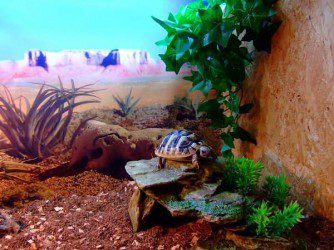
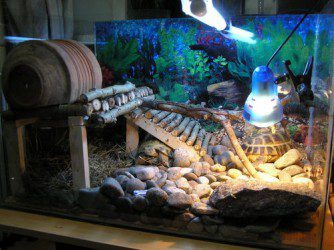



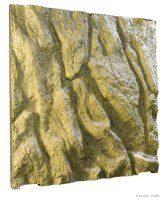 Background for terrariums
Background for terrariums